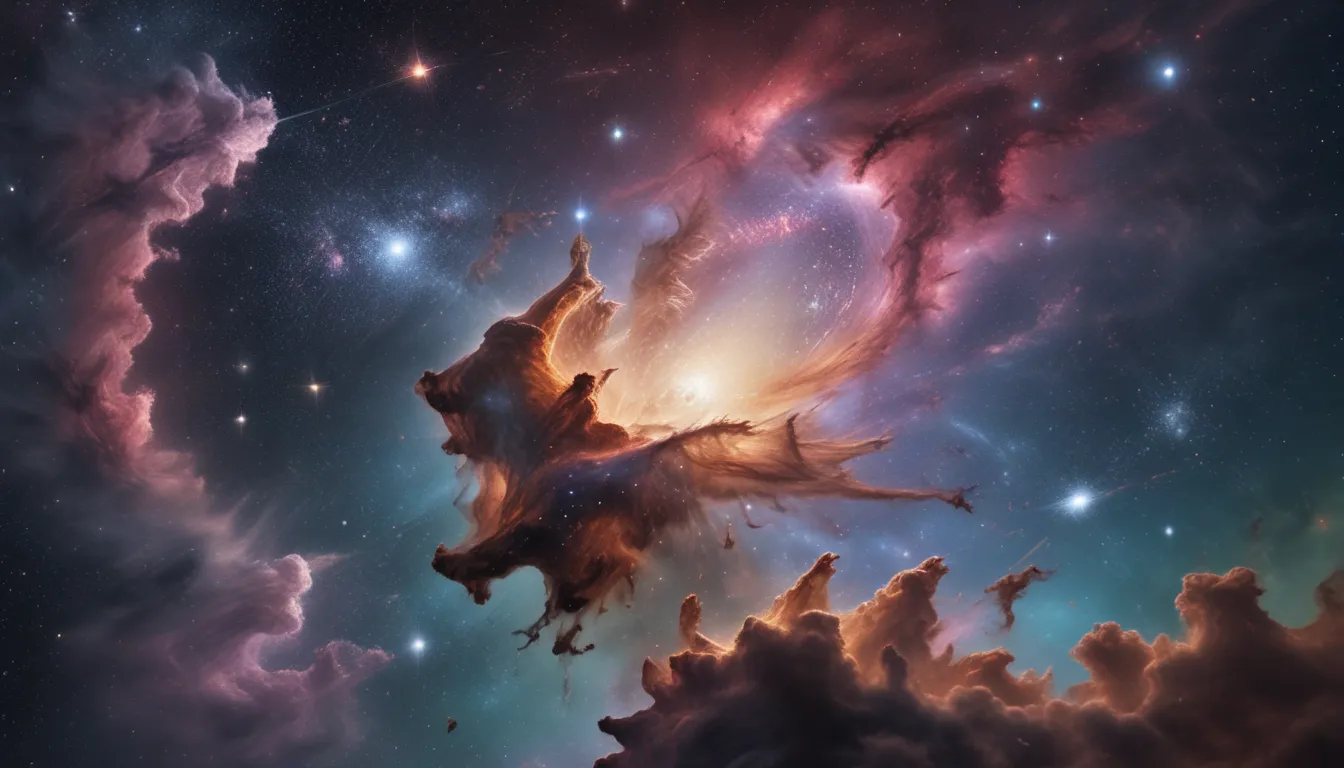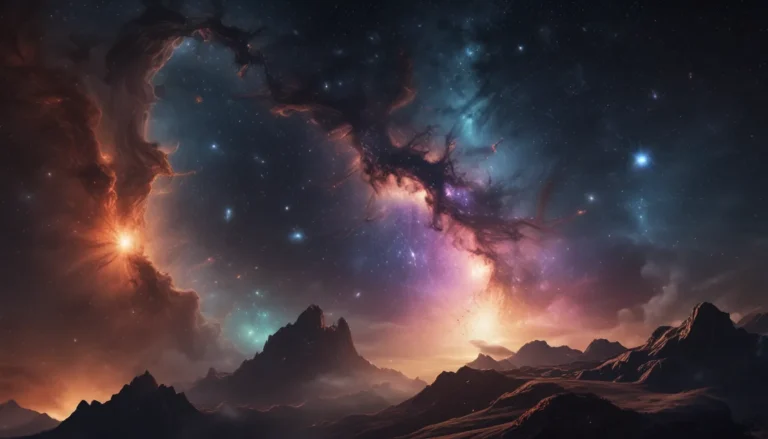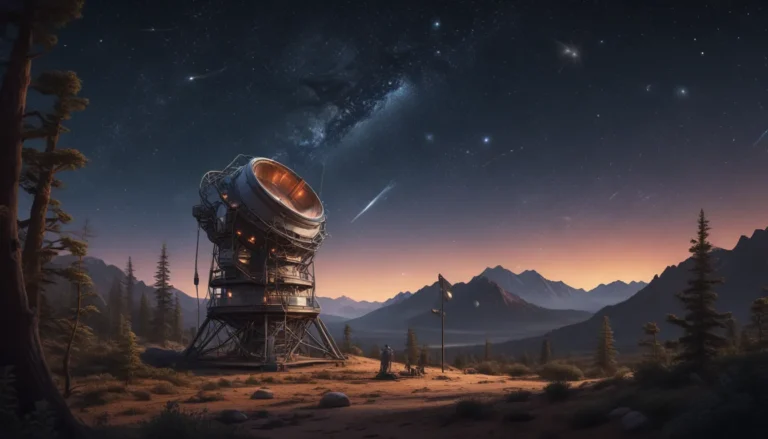The pictures we use in our articles might not show exactly what the words say. We choose these pictures to make you interested in reading more. The pictures work together with the words but don’t take their place. The words still tell you the important facts.
Are you ready to embark on a cosmic adventure that will leave you in awe of the magnificence of our universe? Join us as we unravel the mysteries of the Large Magellanic Cloud (LMC), a celestial object that has captured the imagination of astronomers and stargazers alike. Sit back, relax, and let your inner space explorer soar as we delve into the depths of the LMC and uncover 20 mind-blowing facts that will expand your understanding of the cosmos.
Delving into the Celestial Marvel: The Large Magellanic Cloud
Let's start our journey by exploring the fascinating characteristics of the LMC, a dwarf galaxy located just over 160,000 light-years away from us. Unlike traditional spiral or elliptical galaxies, the LMC is classified as a dwarf irregular galaxy, boasting billions of stars within its approximately 14,000 light-year diameter. Named after the illustrious explorer Ferdinand Magellan, who first observed it during his historic voyage in the early 16th century, the LMC is located in the constellation Dorado in the southern hemisphere.
Uncovering the Mysteries: Key Facts About the Large Magellanic Cloud
- Visible Wonder: The LMC is not just a distant speck in the sky; it is visible to the naked eye from dark locations with minimal light pollution, making it a celestial marvel accessible to all.
- Barred Beauty: Featuring a distinctive bar structure in its central region, the LMC mirrors the characteristics of barred spiral galaxies, adding to its allure.
- Stellar Nursery: With its abundance of interstellar gas and dust, the LMC is a vibrant hotbed for star formation, boasting clusters of young, massive stars that illuminate its cosmic canvas.
- Celestial Gem: Among its many treasures, the LMC is home to the awe-inspiring Tarantula Nebula, a massive star-forming region that dazzles observers with its brilliance in infrared and visible light.
- Galactic Connections: Interacting closely with our Milky Way, the LMC experiences gravitational tugs and distortions, shaping its structure and dynamics.
- Enigmatic Elements: From gas bridges connecting it to the Small Magellanic Cloud to intense stellar winds shaping its surroundings, the LMC is a hub of cosmic interactions and phenomena.
Empowering Scientific Exploration: The LMC’s Contributions to Cosmology
As astronomers continue to study the LMC in intricate detail using advanced telescopes like the Hubble Space Telescope, they uncover valuable insights into galaxy formation, stellar evolution, and the dynamics of cosmic structures. By examining the Cepheid variable stars within the LMC, researchers can measure the expansion rate of the universe, known as the Hubble Constant, and gain a deeper understanding of the cosmos' vastness.
Inspiring Artistic Expressions: The LMC’s Impact Beyond Science
Beyond its scientific significance, the ethereal beauty of the LMC has inspired countless artists and authors to depict its cosmic wonders in works of art and literature. From surreal paintings to captivating novels, the LMC's allure transcends scientific boundaries, captivating the imagination of creative minds across the globe.
Embracing Knowledge and Wonder: The Endless Journey of Cosmic Exploration
As we conclude our exploration of the Large Magellanic Cloud, we are reminded of the boundless mysteries that await us in the universe. From its intricate interactions with neighboring galaxies to its role in shaping our understanding of cosmic phenomena, the LMC continues to stand as a testament to the vastness and complexity of our cosmos. So, take a moment to gaze up at the night sky, ponder the wonders of the LMC, and let your curiosity guide you through the infinite expanse of the universe.
Join Us in Unraveling the Universe’s Mysteries
Are you ready to embark on a cosmic journey filled with awe-inspiring facts and mind-blowing revelations? Join us as we delve into the wonders of the cosmos and uncover the secrets of celestial marvels like the Large Magellanic Cloud. Let your curiosity soar as we explore the depths of the universe and unravel its hidden treasures. Stay tuned for more captivating insights and fascinating discoveries that will ignite your passion for space exploration and cosmic exploration.
FAQs: Unveiling the Mysteries of the LMC
Q: What is the Large Magellanic Cloud (LMC)?
A: The Large Magellanic Cloud (LMC) is a dwarf irregular galaxy located approximately 160,000 light-years away from Earth. Named after Ferdinand Magellan, it is one of the closest neighbors to our Milky Way.
Q: How big is the Large Magellanic Cloud?
A: The LMC has a diameter of about 14,000 light-years, making it significantly smaller than the Milky Way.
Q: What makes the LMC unique?
A: The LMC's irregular shape, prominent bar structure, and rich collection of young, hot stars set it apart from other galaxies. Additionally, its interactions with the Milky Way and the Small Magellanic Cloud contribute to its uniqueness.
Q: Can we see the LMC with the naked eye?
A: Yes, the LMC is visible to the naked eye from the Southern Hemisphere, appearing as a faint cloud-like patch in the night sky.
Q: What can studying the LMC tell us about the universe?
A: Studying the LMC provides valuable insights into galaxy formation, stellar evolution, and cosmic interactions. By unraveling the mysteries of the LMC, astronomers enhance their understanding of the broader universe.
As we conclude our cosmic odyssey through the wonders of the Large Magellanic Cloud, we invite you to dive deeper into the mysteries of the universe and embrace the endless possibilities of cosmic exploration. Join us on this thrilling journey of discovery and let the vastness and beauty of the cosmos ignite your curiosity and wonder. Explore, learn, and marvel at the celestial marvels that surround us, as we continue to unravel the secrets of the universe one discovery at a time.






